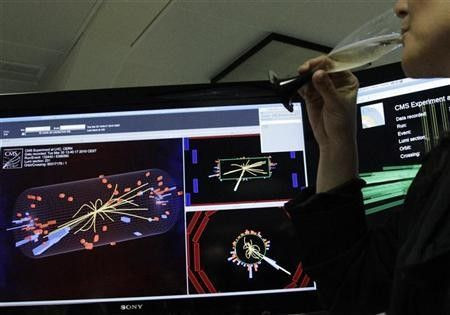No Higgs Boson: Particle Accelerator Finds Other New Sub-Atomic Particle
Elementary Particle Was Theorized, Now Found

Scientists at the Large Hadron Collider near Geneva, Switzerland have found a new elementary particle, and the first discovered since the nearly $10 billion instrument first began searching for the Higgs Boson in early 2010. Large particle accelerators like the LHC were built to explore some of our most fundamental questions about physics and help us understand the most penetrating laws of nature.
By smashing nuclear particles together, scientists can see how particles interact under the most extreme environments and better understand the forces that hold them and the universe together.
The first particle discovered by the LHC is called the Cb (3p) or Chi_b (3P) and is an excited state of a particle already observed. Pronounced kye-bee three P, the particle was thought to exist for years, but there was no proof until now, researchers said in a new report submitted to the peer reviewing Web site arXiv.org. Discovery of the particle helps fill in gaps in the Standard Model, what scientists refer to in order to explain the inner workings of sub-atomic particles. One major reason for these types of experiments in general is to find the Higgs Boson that scientists predict has the ability to impart mass to any particle comes in contact with.
Understanding how the Higgs interacts with other particles would in turn help us understand the role of dark energy, the mysterious energy that seems to make up the majority of the matter in the universe. Chi_b (3P) is known as a Chi particle that is made of smaller particles called quarks. Quarks also make up other elementary particles like protons and electrons, and understanding them helps us better understand one of the fundamental forces in nature, the Strong Force. One of the strongest forces in nature, more so even then gravity, the Strong Force is what holds atomic nuclei together. That is why installations like the LHC are necessary. They can ram particles together with such force that the Strong Force is broken, revealing underlying particles like the Higgs.
© Copyright IBTimes 2024. All rights reserved.





















